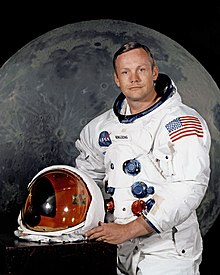
American icon Neil Armstrong, the first astronaut to walk on the moon, has died at the age of 82. Earlier this month, Armstrong underwent heart bypass surgery and was said to be “doing great” afterward. On August 5, Armstrong celebrated his 82nd birthday. On July 20, 1969, Armstrong, as the commander of the Apollo 11 mission, became the first man to land on the moon.
Neil Armstrong passed away, leaving behind a great maxim: “It is one small step for man, but one giant leap for mankind.”
This maxim contains the great human spirit of exploration. Exploring the mysteries, the moon and the universe encapsulate the great human spirit of exploration. Stimulated by this spirit, human society continues to progress, broaden its horizons and move toward civilization. Each step is a step forward; each step is a great exploration. Taking one solid step each time is the secret to human civilization and progress.
This maxim contains the great personality of one man. One small step for an individual is very humble, but this small step comprises boundless wisdom. The steps of countless people are a giant leap for mankind. This giant leap was not completed by him alone, but was the result of common human wisdom. The achievement always belongs to all mankind. Neil Armstrong treated fame as a burden and completely retired from the public eye. Armstrong retired from NASA in 1971, and was a professor of Aerospace Engineering at University of Cincinnati until 1979. Then, Armstrong brought a farm overgrown with weeds in the remote countryside and started his own semi-secluded life. This is the best representation of his great character.
This maxim hides a great philosophy. Carefully thinking about it, a person can make his small steps more meaningful only by accumulating more wisdom. Armstrong’s small step is one giant leap for mankind. This small step is a leap that is not limited to technology. It is a spiritual leap, a leap in personality and history; the responsibility of the leap will forever fall on those who are prepared. In 1955, he joined NASA and became a non-military, high-speed test pilot. He performed over 900 flying missions in various aircrafts. As a test pilot, Armstrong performed flight test programs on X-15 in cutting-edge research, skirting the edge of the atmosphere while flying at 4,000 miles per hour. This kind of aircraft can fly at supersonic speed and reach very high altitude. Flying over the height of 80km in this kind of aircraft was once considered a necessary benchmark for future astronauts. Great achievements will forever be the result of effort.
Neil Armstrong passed away, leaving behind a great maxim that condenses all of the great deeds of his life and is bound to become the monument that will stand forever in the history of human civilization and become an immortal monument.

Leave a Reply
You must be logged in to post a comment.